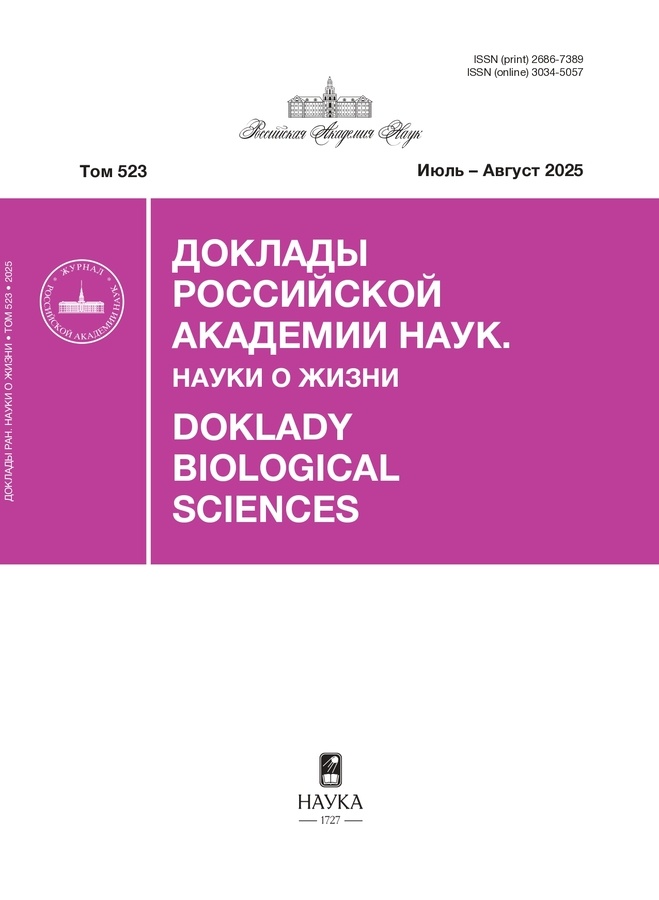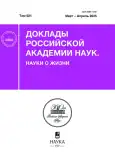Types of pesticides interaction in mixtures: results of inhibitory analysis
- Authors: Esimbekova Е.N.1,2, Satir D.V.1, Kratasyuk V.А.1,2
-
Affiliations:
- Siberian Federal University
- Institute of Biophysics of Siberian Branch of Russian Academy of Sciences
- Issue: Vol 521, No 1 (2025)
- Pages: 293-298
- Section: Articles
- URL: https://vestnik.nvsu.ru/2686-7389/article/view/684077
- DOI: https://doi.org/10.31857/S2686738925020202
- ID: 684077
Cite item
Abstract
Enzymatic inhibitory assay based on the coupled enzyme system NAD(P)·H:FMN oxidoreductase and luciferase (Red + Luc), originally developed for environmental monitoring of soils, water and air, is proposed as a method for evaluating changes in the properties of active ingredients of pesticide preparations depending on the additional components (formulants), as well as when pesticides are combined in mixtures. Using the commercial pesticide preparations containing glyphosate it was shown that the degree of inhibition of the coupled enzyme system Red + Luc is depended on the formulants rather than the active ingredient in their composition. Moreover, the combined inhibitory effect of the pesticides in a mixture was not additive. According to the results of the inhibitory assay, the type of interaction of pesticide preparations in mixtures depends on both the formulants used and the ratio of pesticides in the mixture.
Full Text
About the authors
Е. N. Esimbekova
Siberian Federal University; Institute of Biophysics of Siberian Branch of Russian Academy of Sciences
Author for correspondence.
Email: esimbekova@yandex.ru
Russian Federation, Krasnoyarsk; Krasnoyarsk
D. V. Satir
Siberian Federal University
Email: esimbekova@yandex.ru
Russian Federation, Krasnoyarsk
V. А. Kratasyuk
Siberian Federal University; Institute of Biophysics of Siberian Branch of Russian Academy of Sciences
Email: esimbekova@yandex.ru
Russian Federation, Krasnoyarsk; Krasnoyarsk
References
- Kalyabina V.P., Esimbekova E.N., Kopylova K.V., et al. Pesticides: formulants, distribution pathways and effects on human health – a review // Toxicology Reports. 2021. Vol. 8. P. 1179–1192.
- Huang P., Liu S.-S., Wang Z.-J., et al. Study on the characterization of pesticide modes of action similarity and the multi-endpoint combined toxicity of pesticide mixtures to Caenorhabditis elegans // Science of The Total Environment. 2023. Vol. 893. Article number 164918.
- Sol Dourdin T., Rivière G., Cormier A., et al. Molecular and phenotypic effects of early exposure to an environmentally relevant pesticide mixture in the Pacific oyster, Crassostrea gigas // Environmental Pollution. 2023. Vol. 326. Article number 121472.
- Peng F.-J., Palazzi P., Viguié C., et al. Hormonal profile changes induced by pesticide mixture exposure in female rats revealed by hair analysis // Chemosphere. 2022. Vol. 303. Pt. 2. Article number 135059.
- Coalova I., March H., Molina M. del C.R. de, et al. Individual and joint effects of glyphosate and cypermethrin formulations on two human cell lines // Toxicology and Applied Pharmacology. 2023. Vol. 461. Article number 116398.
- Denisov I., Lukyanenko K., Yakimov A., et al. Disposable luciferase-based microfluidic chip for rapid assay of water pollution // Luminescence. 2018. Vol. 33, Issue 6. P. 1054–1061.
- Esimbekova E.N., Kalyabina V.P., Kopylova K.V., et al. Design of bioluminescent biosensors for assessing contamination of complex matrices // Talanta. 2021. Vol. 233. Article number 122509.
- Klátyik S., Gergely S., Oláh M., et al. Terrestrial ecotoxicity of glyphosate, its formulations, and co-formulants: evidence from 2010–2023 // Environmental Sciences Europe. 2023. Vol. 35, Article number 51.
- Esimbekova E.N., Kalyabina V.P., Kopylova K.V., et al. Enzyme Inhibition‐based assay to estimate the contribution of formulants to the effect of commercial pesticide formulations // International Journal of Molecular Sciences. 2023. Vol. 24. Article number 2268.
- Hernández A.F., Parrón T., Tsatsakis A.M., et al. Toxic effects of pesticide mixtures at a molecular level: their relevance to human health // Toxicology. 2013. Vol. 307. P. 136–145.
- Zeliger H.I. Human toxicology of chemical mixtures: toxic consequences beyond the impact of one-component product and environmental exposures. 2nd ed. Oxford: William Andrew/Elsevier; 2011.
- Huang P., Liu S.-S., Xu Y.-Q., et al. Combined lethal toxicities of pesticides with similar structures to Caenorhabditis elegans are not necessarily concentration additives // Environmental Pollution. 2021. Vol. 286. Article number 117207.
- Defarge N., Spiroux de Vendômois J., Séralini G.E. Toxicity of formulants and heavy metals in glyphosate-based herbicides and other pesticides // Toxicology Reports. 2018. Vol. 5. P. 156–163.
- Chaufan G., Coalova I., Molina M. del C.R. de. Glyphosate commercial formulation causes cytotoxicity, oxidative effects, and apoptosis on human cells: differences with its active ingredient // International Journal of Toxicology. 2014. Vol. 33, N 1. P. 29–38.
Supplementary files

Note
Presented by Academician of the RAS A.G. Degemedzhi










